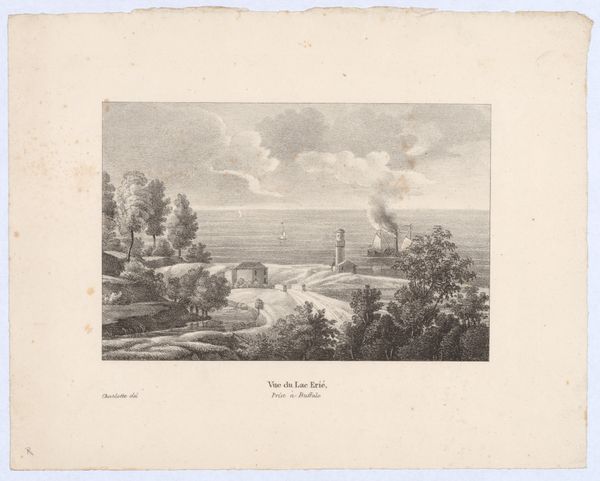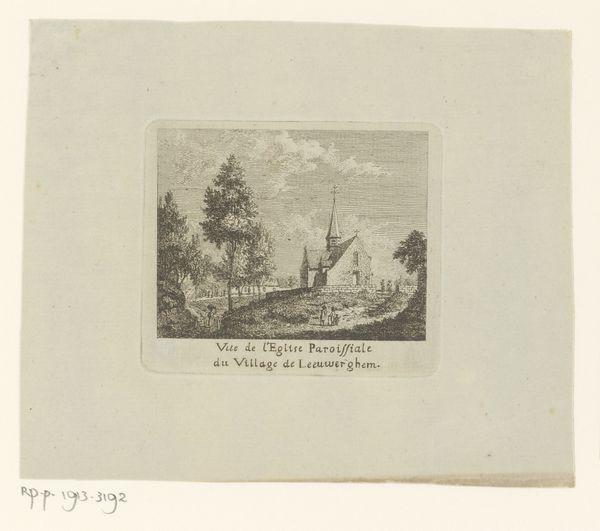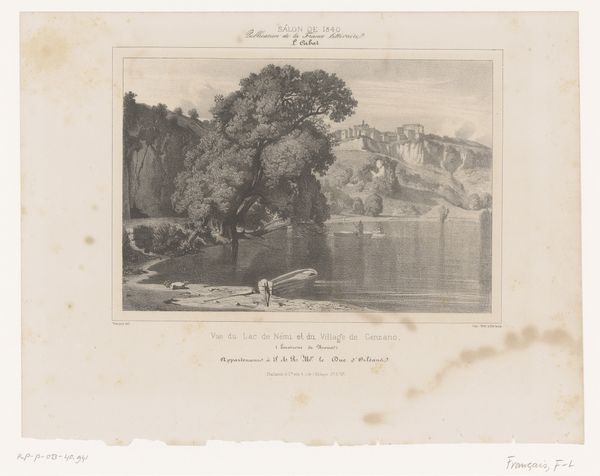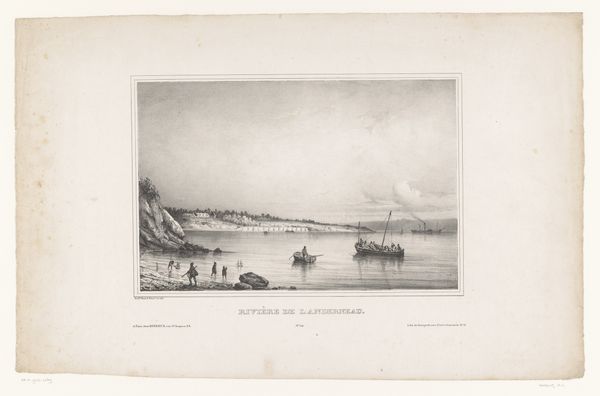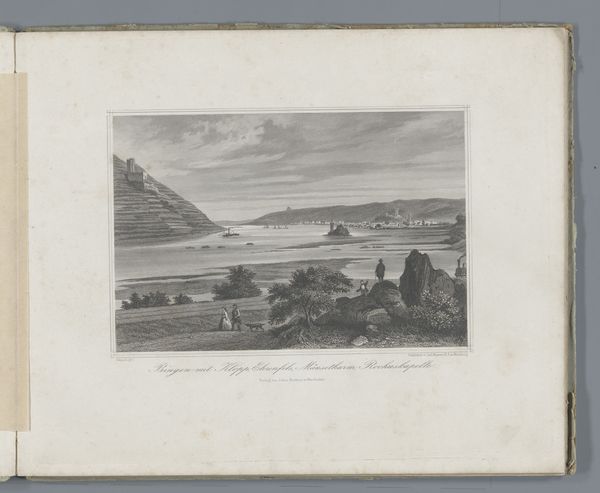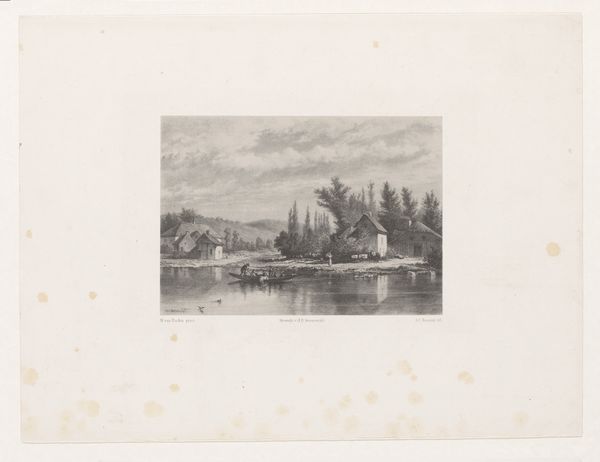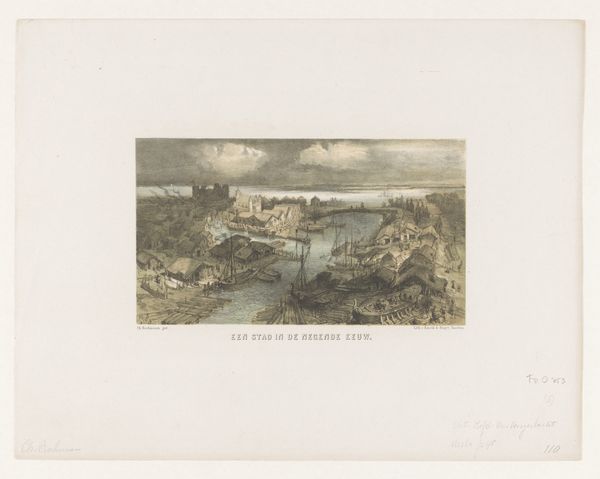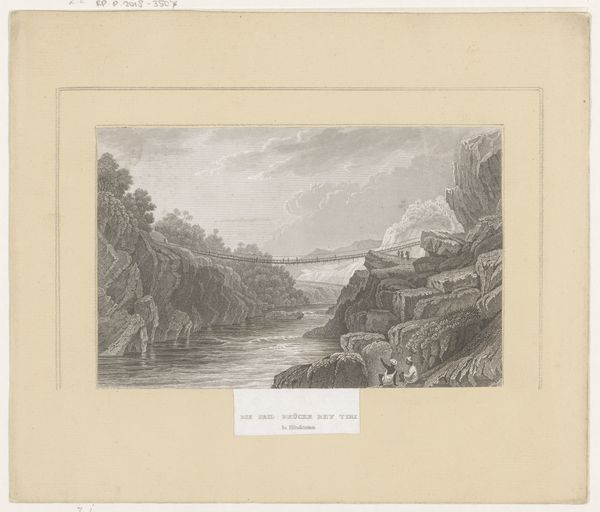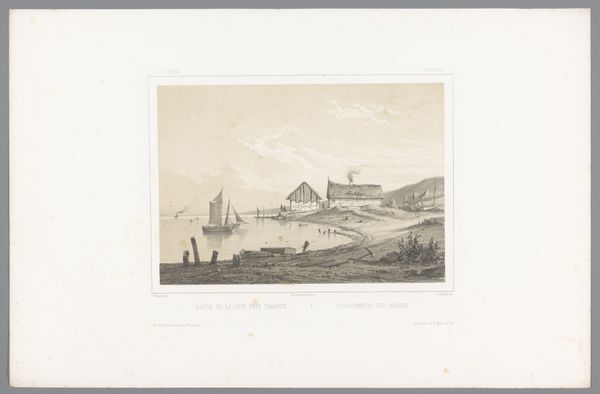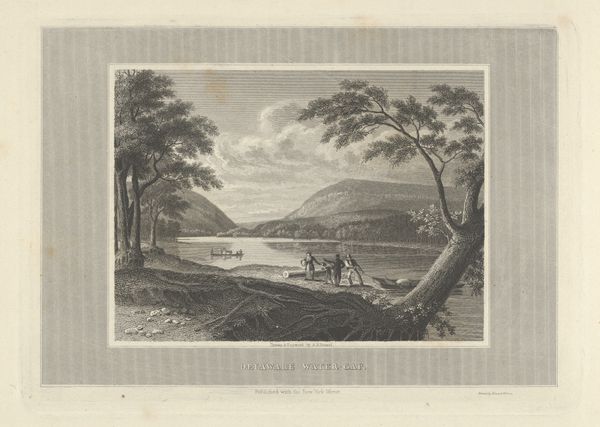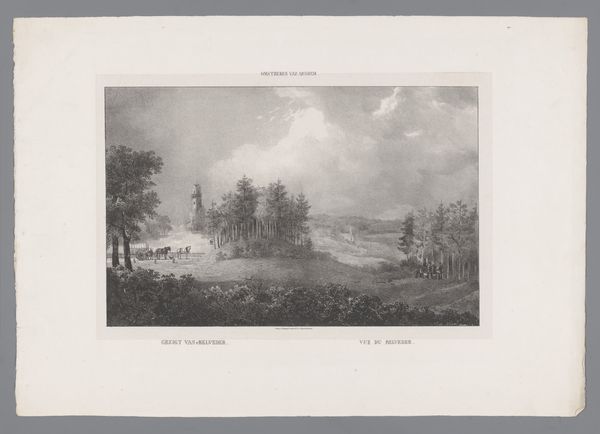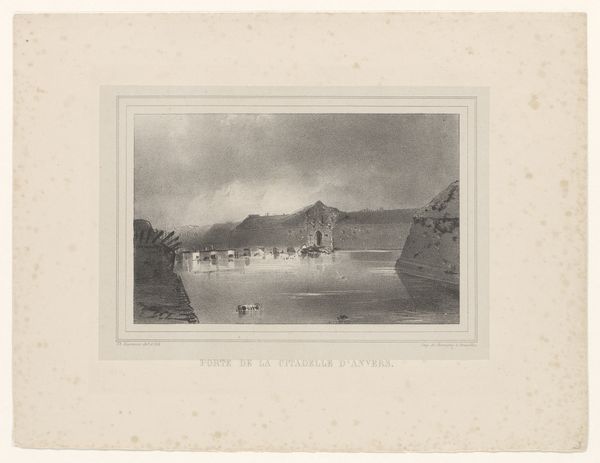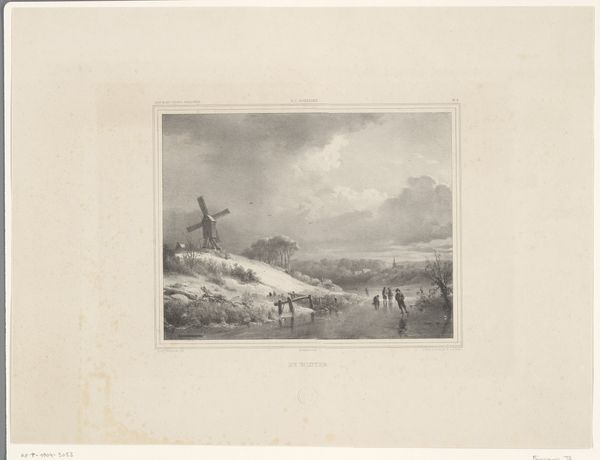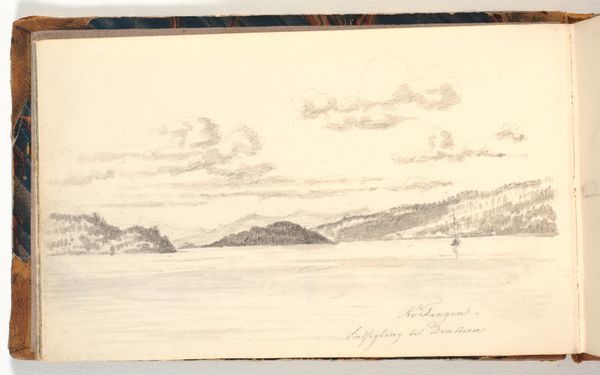
drawing, coloured-pencil, print, etching
drawing
boat
lake
coloured-pencil
etching
landscape
coloured pencil
romanticism
cityscape
Dimensions: image: 5 1/16 x 8 in. (12.9 x 20.3 cm) sheet: 9 1/2 x 12 1/4 in. (24.1 x 31.1 cm)
Copyright: Public Domain
Curator: Immediately, I’m struck by the stillness of it all. There's an almost melancholic calm that hangs over this scene. Editor: And it’s a fascinating scene. What we're looking at is 'Entrée du Niagara dans le Lac Ontario', a work by Charlotte Bonaparte from 1824, now residing here at the Met. It’s an etching, enhanced with coloured pencil. Curator: Yes, that soft colouring really does contribute to the tranquility. Almost muted. One can imagine being on that boat, drifting between the majestic trees reflected in the glassy surface of the lake. The paper adds such a raw component too. Editor: It's interesting to consider the materials she had available. The choice to use etching and colored pencil reflects perhaps both the availability of printmaking technology and the desire to add a personalized touch. We must remember the Bonapartes as displaced elites in America, finding ways of dealing with boredom through such landscape projects. It's important, I think, to consider who makes art, and *how* they make art. Curator: Absolutely. It's so much more intimate than, say, an oil painting of the same view might have been. But to your point—the Bonapartes were often outsiders wherever they resided, even on their travels, searching for an authenticity. And so I see that quietude reflecting their search to settle peacefully in a place, reflected on the smooth water's skin, hoping to capture their longing for what may lie further. Editor: Landscape as a product for elites. Travel, as a display of colonial dominance, often leads to such idyllic artwork of supposedly empty, 'available' land. The making of prints like this becomes, itself, part of this historical process, showing how resources are consumed. And this 'romantic' view occludes how indigenous materials and practices are ignored or erased. Curator: Yes, one has to think critically about what isn't immediately seen. Perhaps our experience as viewers asks that we add something more with our perspective now to what we've taken at first glance, and give rise to an active role of meaning making for the viewers as well, in the here and now. Editor: So, a drawing of calm, reflecting not only water, but the processes of its time. Thank you for sharing your insights! Curator: Likewise. Thank you for broadening the lens to see that there is so much more than landscape on the surface.
Comments
No comments
Be the first to comment and join the conversation on the ultimate creative platform.
